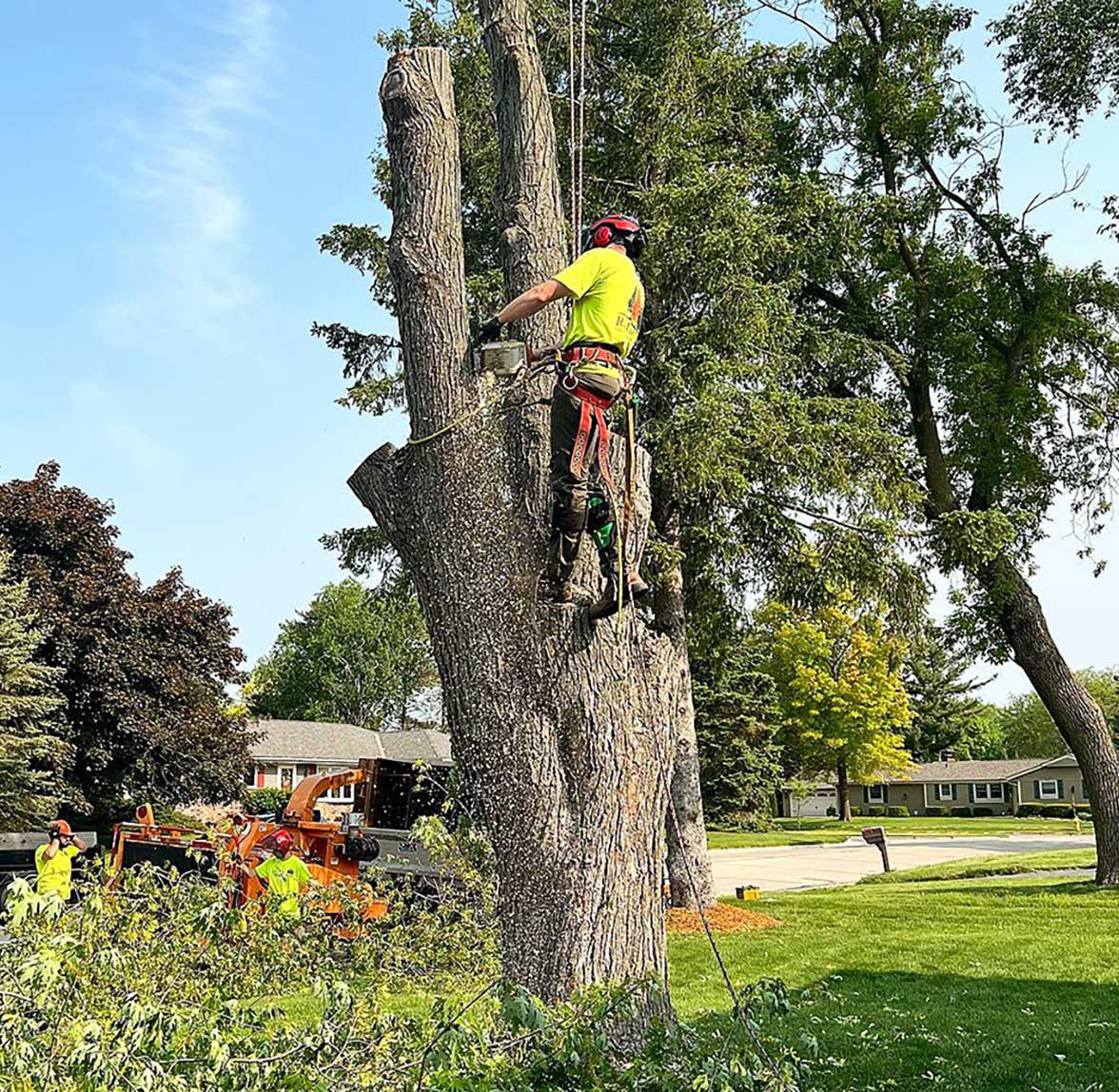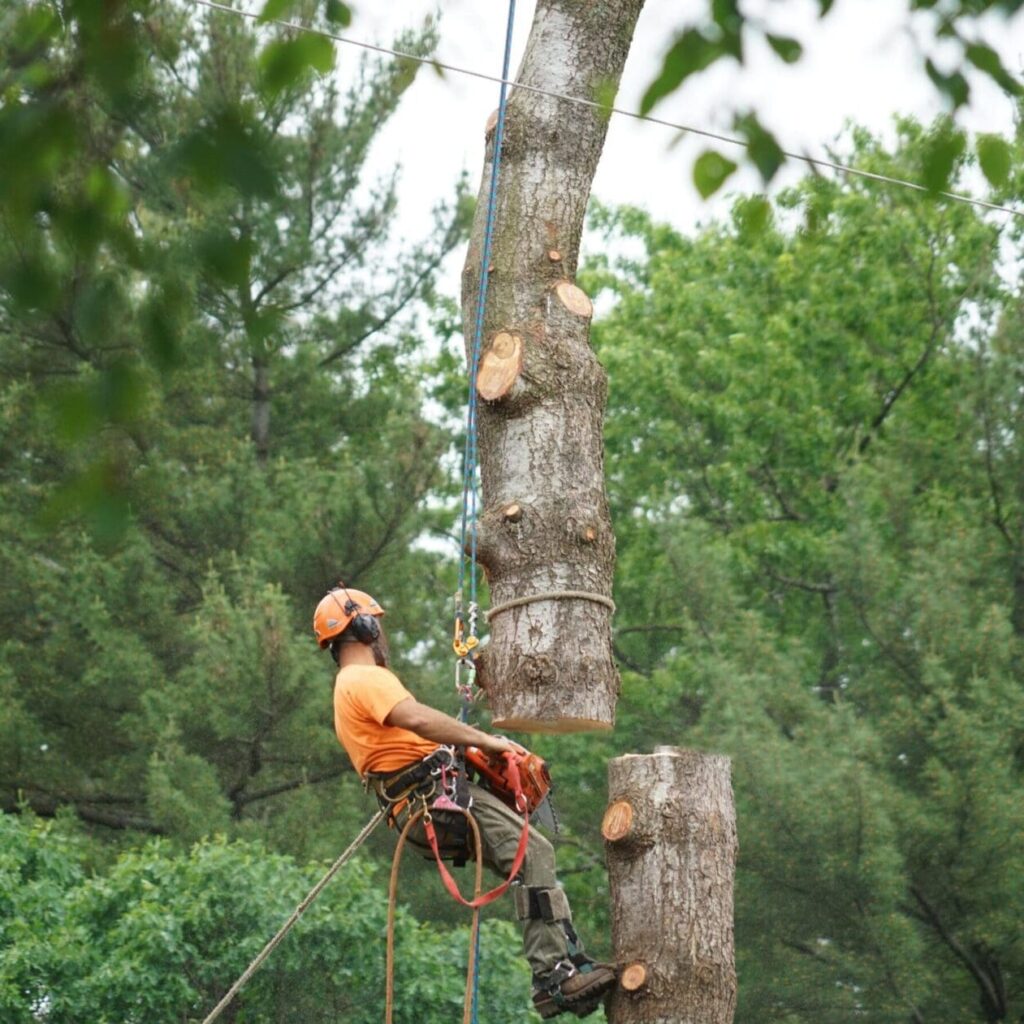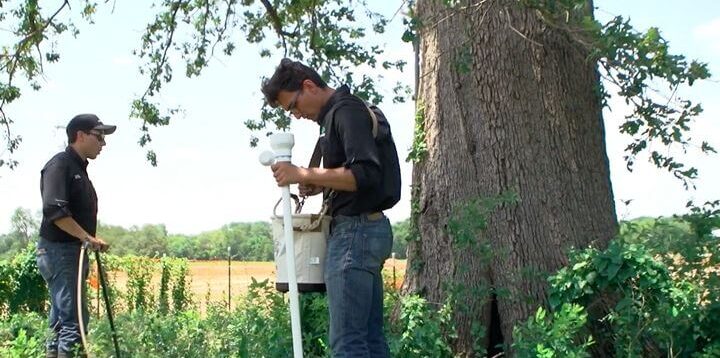Understanding Pine Tree Removal
When a pine tree becomes a hazard or an inconvenience, removing it may be necessary. However, this task isn’t as simple as it sounds—it involves careful planning, proper tools, and sometimes, professional expertise.
What is Pine Tree Removal?
Definition and Purpose
Pine tree removal involves cutting down a pine tree and managing the remnants, including branches, trunk, and stump. The purpose varies from safety concerns to aesthetic changes or preventing further damage to nearby structures.
Common Reasons for Pine Tree Removal
• Disease or Pest Infestation: Pine trees can fall victim to pests like bark beetles or diseases such as pine wilt.
• Storm Damage: High winds can cause significant structural damage, leaving the tree unstable.
• Growth Issues: Trees that grow too large may interfere with power lines, foundations, or other trees.
• Property Development: Expanding driveways, patios, or other landscaping projects might require tree removal.
Importance of Professional Pine Tree Removal
Safety Considerations
Removing a pine tree, especially a tall or mature one, is dangerous. Falling limbs, malfunctioning equipment, or a misjudged fall can cause serious injuries or property damage. Professionals use safety gear, cranes, and strategic cutting techniques to mitigate these risks.

Legal Requirements and Permits
Certain municipalities mandate obtaining a permit before removing a tree, particularly if it exceeds a specific height or diameter. Hiring a professional ensures compliance with local laws, avoiding fines or penalties.
Assessing the Need for Pine Tree Removal
Signs Your Pine Tree Needs Removal
Dead or Dying Trees
If a pine tree has stopped producing healthy needles or its bark is peeling extensively, it may be dead or dying. Such trees lose their structural integrity, posing a risk of falling.
Structural Damage or Leaning
A noticeable lean or cracks in the trunk could indicate internal damage. This typically indicates that the tree’s stability is at risk, necessitating prompt removal.
Environmental Impact of Pine Tree Removal
Benefits to Nearby Vegetation
Pine trees can overshadow smaller plants, blocking sunlight and absorbing significant water. Removing a tree can rejuvenate the area, allowing grass, flowers, or shrubs to thrive.
Risks of Over-Removal
While removing one tree can be beneficial, excessive removal can disrupt local ecosystems. Trees provide shade, reduce erosion, and contribute to air quality, so it’s essential to consider the broader environmental impact.
The Pine Tree Removal Process
Preparing for Removal
Evaluating Tree Health
Before removing a tree, it’s important to consult an arborist. They can assess if the tree can be saved through pruning or treatment instead of removal.
Choosing the Right Season
Tree removal is often easier in late fall or winter. The tree’s dormant state reduces sap flow, and the absence of leaves or needles simplifies the job.
Steps in Pine Tree Removal
Site Preparation
Clear the surrounding area of vehicles, furniture, and any objects that could be damaged. Ensure a clear escape route for the team in case of emergency.
Cutting and Felling
The process begins by removing branches to reduce the weight of the trunk. The trunk is then cut in sections from top to bottom, using ropes or cranes for control.
Stump Removal Options
• Grinding: The stump is ground down to below ground level, leaving roots in place.
• Extraction: The stump and root system are fully removed, ideal for future planting in the same spot.
Costs and Factors Influencing Pine Tree Removal
Cost Breakdown of Pine Tree Removal
Factors Affecting Pricing
Various elements play a role in determining the expense of removing a pine tree.
• Tree Size and Height: Taller trees require more labor and equipment.
• Location and Accessibility: Trees near buildings, fences, or power lines need extra care.
• Condition of the Tree: A dead or rotting tree may be more fragile, complicating the removal process.
Average Cost Estimates
On average, removing a medium-sized pine tree costs between $500 and $1,500. Large trees can exceed $2,000, especially if stump removal or debris hauling is included.
DIY vs. Professional Removal
Pros and Cons of DIY
DIY removal can save money, but it’s only suitable for small trees with no proximity risks. It requires chainsaws, safety gear, and experience in tree felling.
Benefits of Hiring Experts
Professionals bring expertise, insurance coverage, and specialized equipment. They handle complex removals efficiently and ensure proper cleanup, making it a safer and often more cost-effective option.

Post-Removal Considerations
Managing Leftover Debris
Recycling and Disposal Options
Branches and logs can be chipped for mulch or hauled away to recycling centers. Local regulations may dictate how to dispose of green waste.
Mulching and Firewood Uses
Pine wood can be cut and cured for firewood, though it burns quickly. Another option is to turn the branches into mulch by chipping them, which can be used in the garden.
Landscaping After Tree Removal
Planting New Trees
Consider replacing the removed tree with a smaller, more manageable species. Native plants are often a good choice, as they support local wildlife.
Soil Restoration Techniques
Tree roots deplete soil nutrients. After removal, enrich the soil with compost or fertilizers to restore its health before planting new vegetation.
Conclusion
Pine tree removal is a complex task that requires careful consideration of safety, environmental impact, and legal requirements. Whether done for safety or aesthetic reasons, understanding the process ensures a successful outcome.

